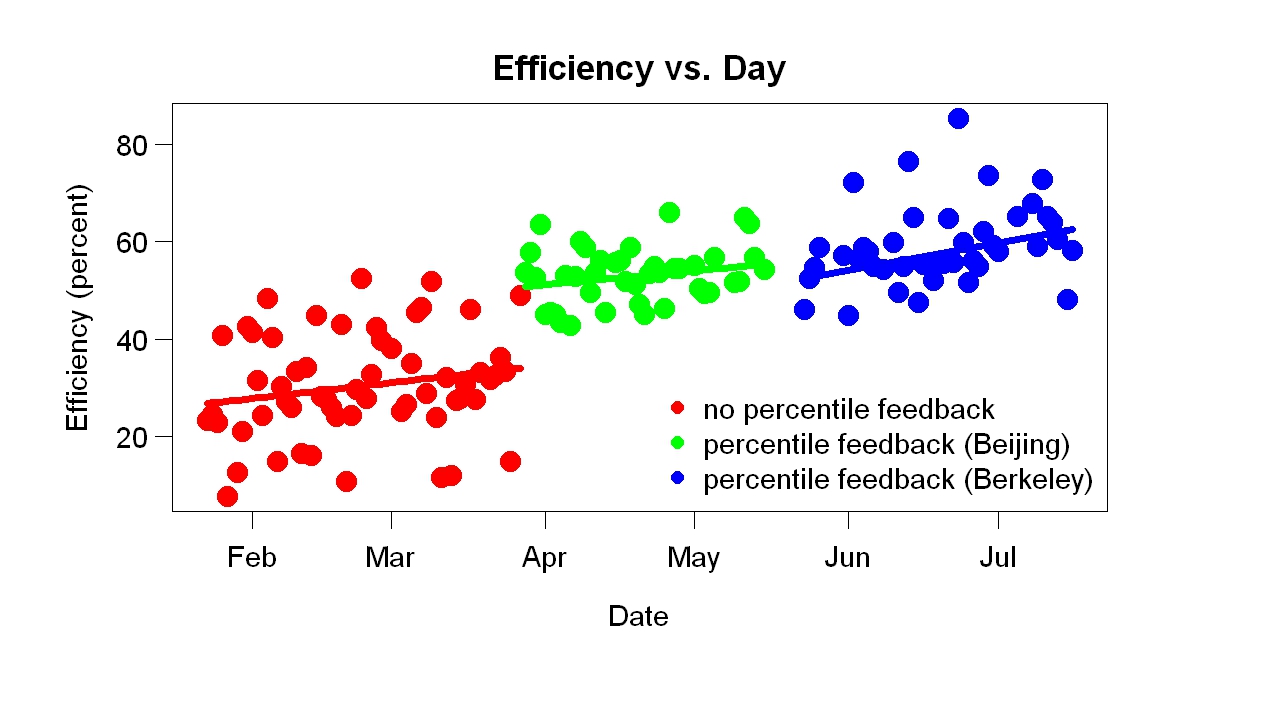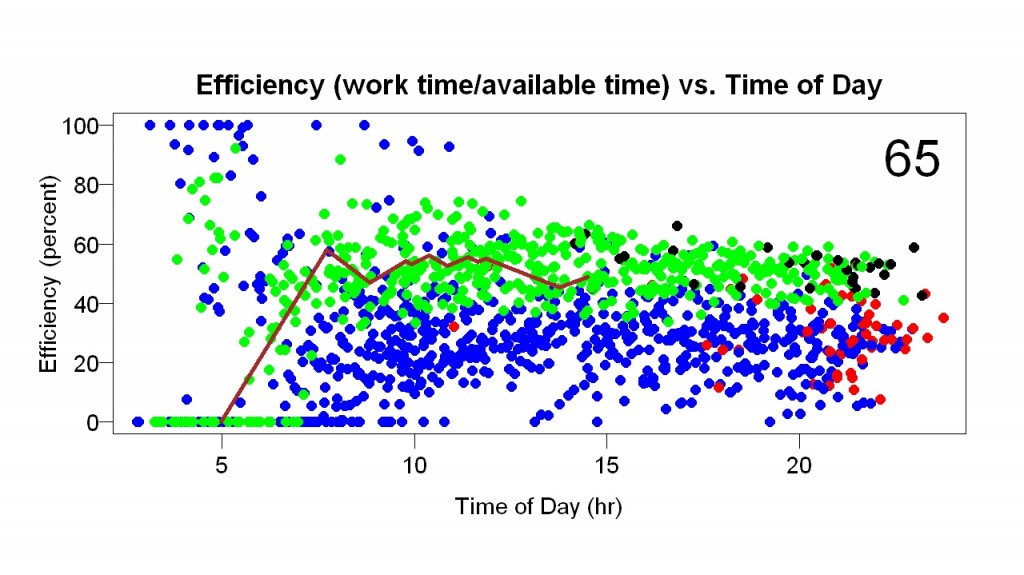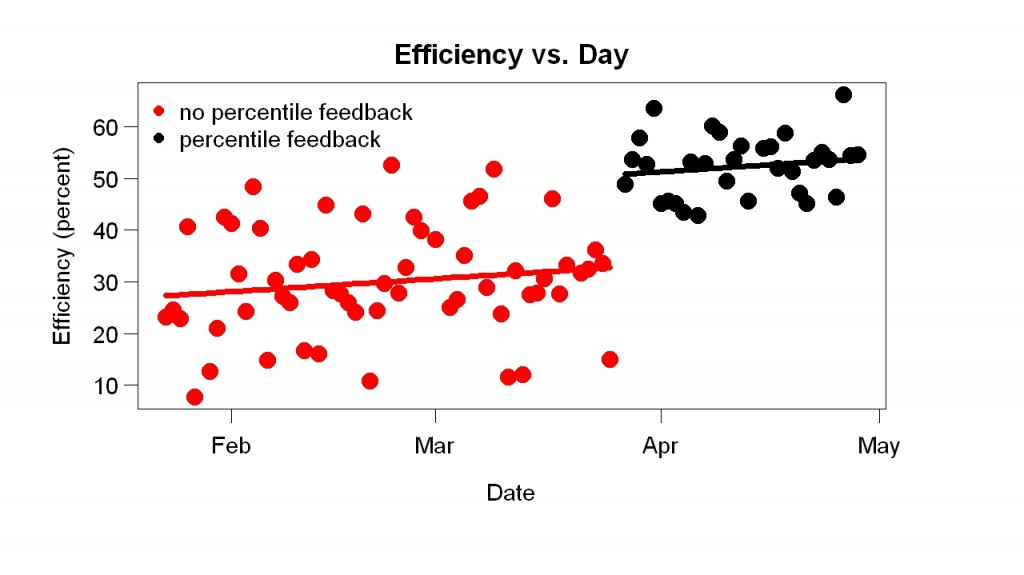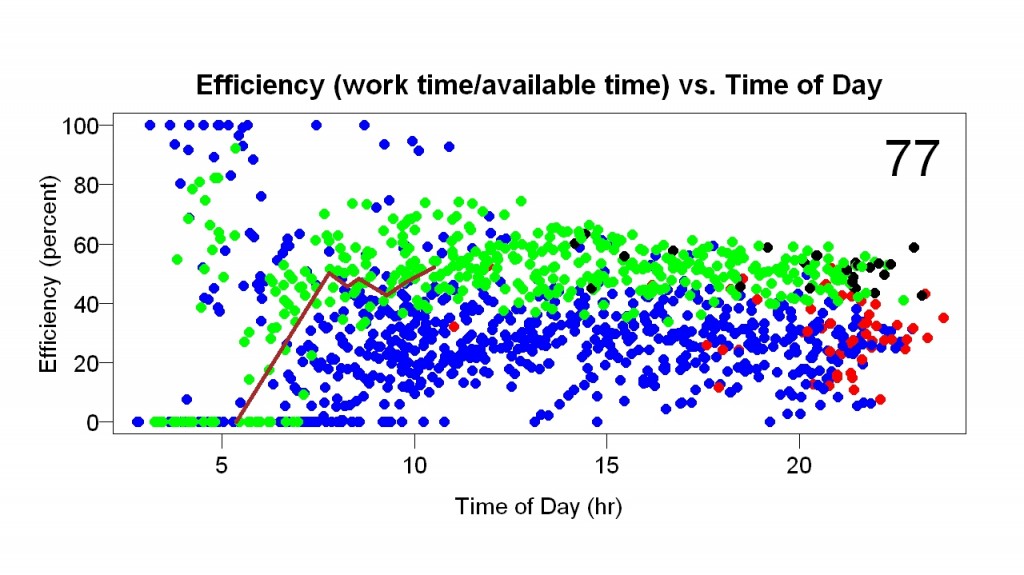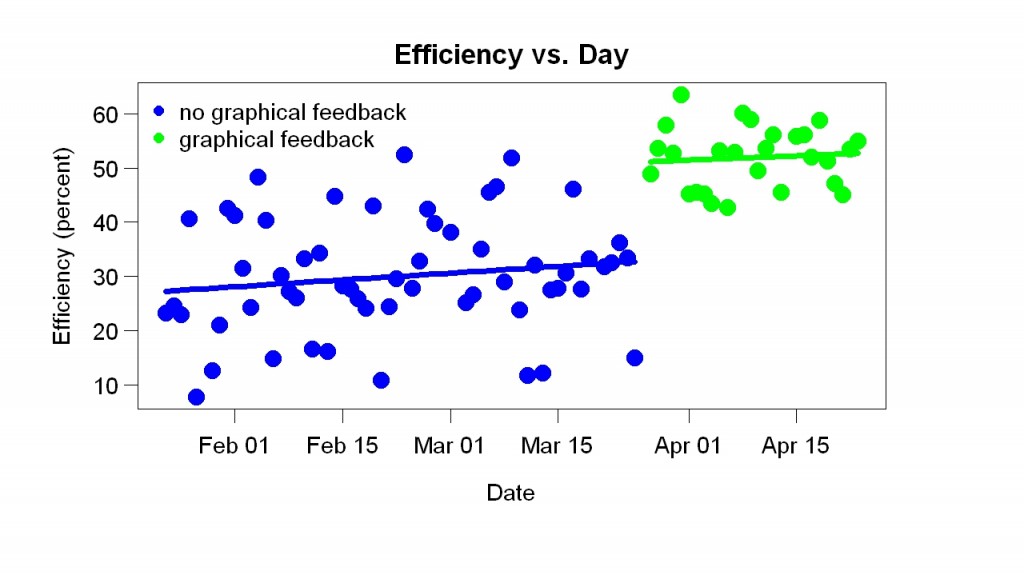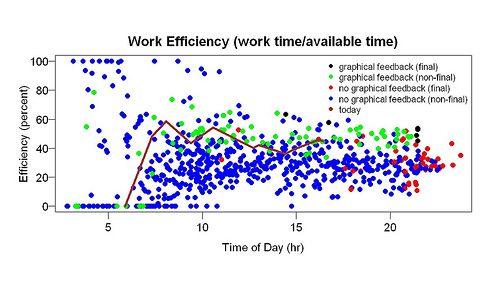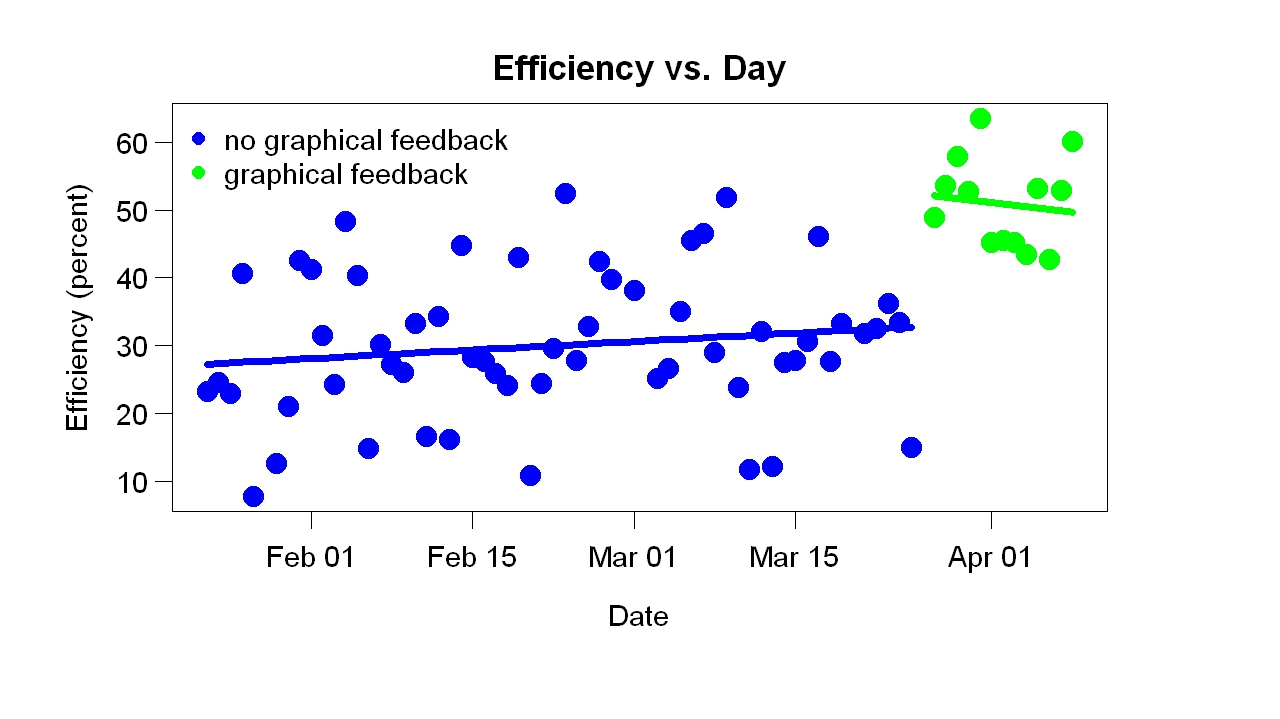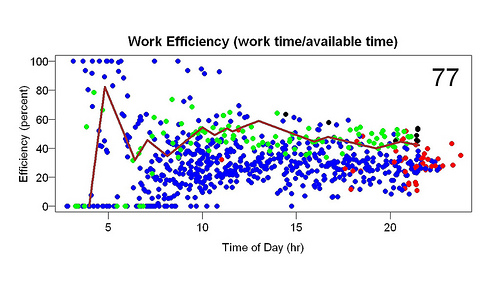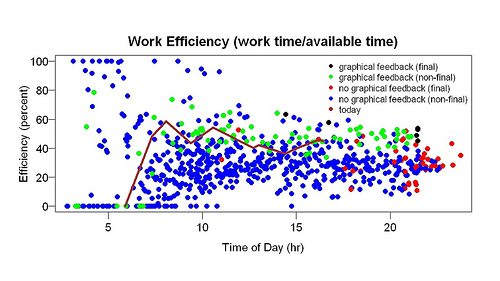I have posted several times about using what I call percentile feedback to boost productivity. Percentile feedback means comparing your current performance to your previous performance using a percentile. If the current performance is in the middle of your previous performances, the percentile is 50, for example. Percentile feedback is easy to understand (scores above 50 are better than average) and is sensitive to small improvements — so even small improvements are rewarded. My implementation had three other helpful features: 1. It adjusted for the time I woke up to make different days more comparable. 2. It measured efficiency (time working/time available) to further improve comparability across days. 3. It was graphical. I made a graph of efficiency throughout the current day versus previous days. It greatly increased how much I worked every day.
I love it and wish I had it for everything I measure. Unlike so many feedback systems, it is realistic and encouraging. I found it worked extremely well — to my surprise, actually. It’s not so surprising I would think of it because it vaguely resembles an animal-learning procedure. (Animal learning is my area of expertise within psychology.)
Nick Winter, one of the developers of Skritter (which I use), recently started to use it. He gave a much-too-short QS talk about it in Pittsburgh a month ago. I asked him about his experience. He is as enthusiastic as I am. He wrote:
The percentile feedback has been a huge success–I’m getting way more done than I ever did, and I’m much better at prioritizing toward my main project. Seeing the graph going in real time has been much better at making me aware of what I need to do to hit high targets each day. I will do a full writeup on this, and on my self experiments, when I finish this iOS app and stop focusing so much on work. The short teaser goes something like this:Phase 0: just tracking normal work at end of day in a Google Doc, average 2 hours a day on iOS developmentPhase 1: tracking normal work and iOS dev separately in the Google Doc, average 4 hours a day on iOS developmentPhase 2: using Beeminder to have better graphing and goal incentive for iOS dev, average 5 hours a dayPhase 3: first three weeks of using percentile feedback, average 6.4 hours a dayPhase 4: second three weeks of using percentile feedback, deciding to really push it based on the positive feedback from my metrics (more productivity, more happiness), average 9.4 hours a daySo now I’m getting close to averaging 70 hours of focused iOS dev a week and it feels great. In a normal work place, “time spent working” != “productivity”, but for me they’re very similar as long as my energy is good, which it almost always is now.The surprising insight is that changing the way that I measured my work performance–from spreadsheet, to better spreadsheet, to graph, to better graph–has had such a huge impact. I have been working on maximizing work productivity for four years, ever since starting the startup, but in the last six months I’ve become radically more effective. I love the percentile feedback graph design!
You can see his implementation on his homepage.
